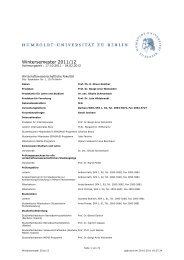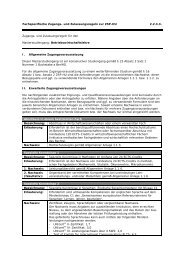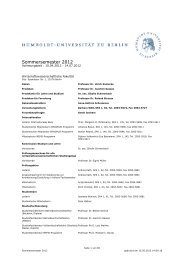Measuring the Effects of a Shock to Monetary Policy - Humboldt ...
Measuring the Effects of a Shock to Monetary Policy - Humboldt ...
Measuring the Effects of a Shock to Monetary Policy - Humboldt ...
You also want an ePaper? Increase the reach of your titles
YUMPU automatically turns print PDFs into web optimized ePapers that Google loves.
34 Bayesian FAVARs with Agnostic Identification<br />
6.2 Identification Schemes in SVARs<br />
In <strong>the</strong> well know SVAR framework, which is <strong>the</strong> mostly known and applied framework for<br />
<strong>the</strong> identification <strong>of</strong> <strong>the</strong> monetary policy shock. The widely applied ones are <strong>the</strong> recursive<br />
Cholesky identification that was advanced CEE [1999], <strong>the</strong> long-run identification that<br />
goes back <strong>to</strong> Blanchard and Quah [1989], and <strong>the</strong> combination <strong>of</strong> <strong>the</strong> previous two that<br />
sets zero restrictions on <strong>the</strong> coefficient matrix introduced by Leeper, Sims and Zha [1996].<br />
Very good surveys about <strong>the</strong> Identification in SVARs can be found in CEE [1999] and<br />
Leeper, Sims and Zha [1996]. They document <strong>the</strong> progress that has been done over <strong>the</strong><br />
time what versions <strong>the</strong>re are around and what <strong>the</strong> state-<strong>of</strong>-<strong>the</strong>-art is.<br />
6.3 Identification in DFMs and FAVARs<br />
Equivalently <strong>to</strong> <strong>the</strong> SVAR case, <strong>the</strong> structural shocks in DFMs and FAVARs have <strong>to</strong> be<br />
derived from <strong>the</strong> reduced form innovation, with <strong>the</strong> distinction that here one refers not<br />
<strong>to</strong> <strong>the</strong> VAR but <strong>to</strong> <strong>the</strong> innovation in <strong>the</strong> FAVAR strictly speaking on <strong>the</strong> Yt or in case<br />
that Yt consists <strong>of</strong> more than one variable, <strong>the</strong> one that <strong>the</strong> researcher is interested in.<br />
There are already some identification schemes applied <strong>to</strong> <strong>the</strong> framework <strong>of</strong> DFMs and<br />
FAVARs around which shall be discussed here very briefly. There is a very good survey<br />
by S<strong>to</strong>ck and Watson (2005), which introduces broadly <strong>the</strong> different approaches and how<br />
<strong>to</strong> set restrictions <strong>to</strong> identify fac<strong>to</strong>rs and fac<strong>to</strong>r loadings. Fur<strong>the</strong>rmore <strong>the</strong>y elaborate<br />
on <strong>the</strong> different identification schemes <strong>to</strong> figure out <strong>the</strong> structural shocks in DFMs and<br />
FAVARs. As <strong>the</strong>y mostly deal with <strong>the</strong> nonparametric and <strong>the</strong> frequentists approach, <strong>the</strong><br />
reader is kindly referred <strong>to</strong> this reference for fur<strong>the</strong>r details. My <strong>the</strong>sis concentrates on<br />
<strong>the</strong> Bayesian approach combined also with a Bayesian identification, namely <strong>the</strong> agnostic<br />
identification. Therefore in <strong>the</strong> following <strong>the</strong> o<strong>the</strong>r approaches are mentioned briefly with<br />
<strong>the</strong> relevant references, and for <strong>the</strong> rest I focus on <strong>the</strong> model and methodology that I<br />
chose <strong>to</strong> analyze described above.<br />
The identification schemes that are around are surveyed by S<strong>to</strong>ck and Watson (2005).




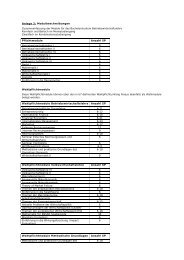

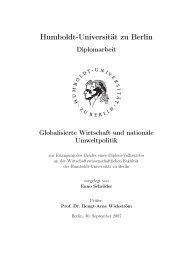
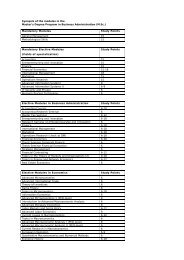
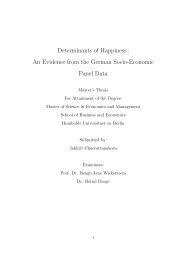
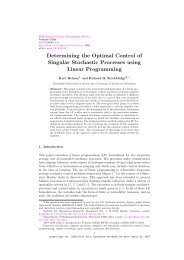
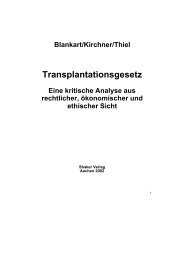
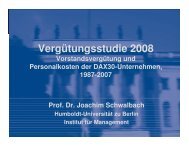

![[Text eingeben] [Text eingeben] Lebenslauf Anna-Maria Schneider](https://img.yumpu.com/16300391/1/184x260/text-eingeben-text-eingeben-lebenslauf-anna-maria-schneider.jpg?quality=85)

